Pointe du Hoc – The United States Rangers Finest Hour
Yesterday Liberation Tour 2015 visited the Canadian landing sites at Juno Beach and afterward we made an emotional visit to the Beny-sur-Mer Canadian War Cemetery. Today we will do the same with regard to the American landings at Omaha Beach, but first, just as the Canadians and Brits had to deal with the batteries at Longues-sur-Mer, we will visit a site where the U.S. Rangers had to disable the guns of Pointe du Hoc.
La Cambe German War Cemetery
We departed our hotel in Bayeaux heading for the Normandy coast and on the way to Pointe du Hoc made a quick stop at the German war cemetery at La Cambe which is maintained by the German War Graves Commission. It tends to the last resting place of an incredible 2.7 million German war dead. La Cambe is one of six cemeteries in Normandy that hold the German casualties from the battles that followed the Allied landings on D-Day. There are over 21,000 dead here, but you have no way of getting a perspective on the size because there are no individual above ground grave markers.
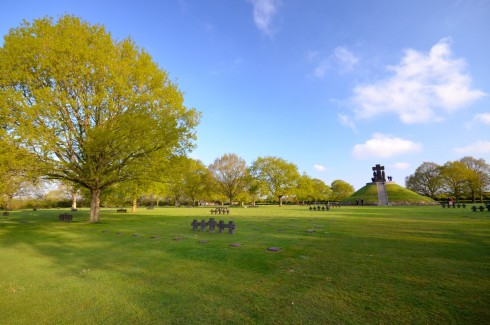
In the middle is a large tumulus which is actually a mass grave for almost 300 dead Germans.
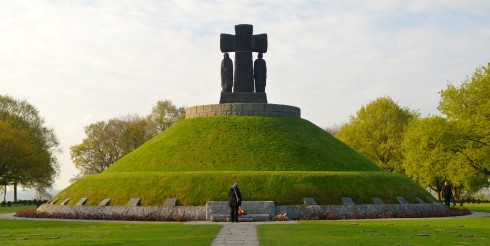
In the morning light this grieving figure at the top was quite striking.
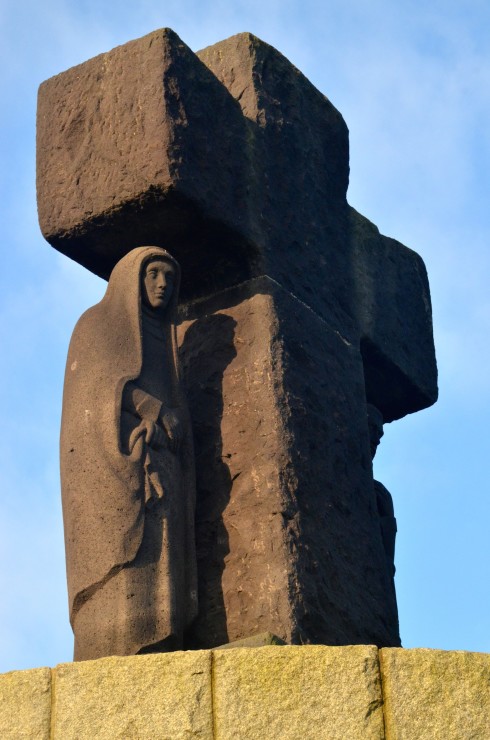
The cemetery was dotted with these five-cross configurations that somehow convey the austerity of death.
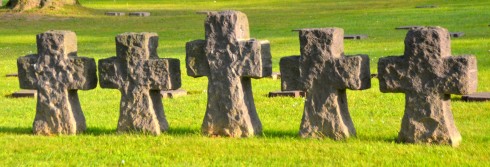
The most famous interment at La Cambe is German tank ace Michael Wittmann, aka The Black Baron, who was credited with more kills than any other tank commander in WWII, an incredible 168 including 14 tanks and 15 personnel carriers in 15 minutes on June 13th, 1944. I couldn’t find his grave, but here is his picture.
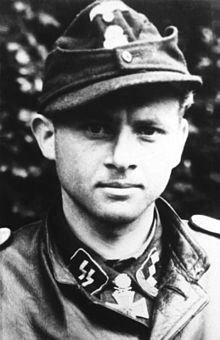
The most infamous Nazi buried here is Adolf Diekmann, an SS commandant who ordered the massacre at Oradour-sur-Glace where, after shooting the 190 men of the village, the SS then set the barns on fire where the women and children of the town were imprisoned. The village populace was wiped out and to this day has not been rebuilt. It remains a stark reminder of the atrocities perpetrated by the Nazis that had nothing to do with legitimate war aims, if that term is not an oxymoron as so many phrases dealing with war and the military seem to be. I didn’t make any attempt to find this bastard’s grave.
Overall, I felt no empathy for the German dead. I was just glad that they didn’t get the chance to kill more of our young men.
Pointe du Hoc
Pointe du Hoc is the type of place that in peacetime, would be a magnet for tourists with its scenic chalk cliffs, sea stack and great views of the Normandy coast in both directions.
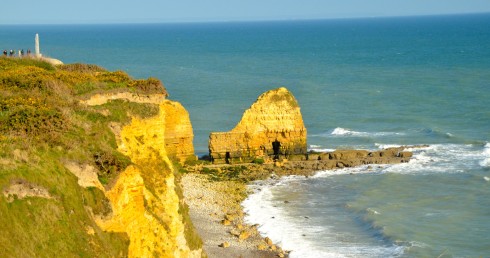
In wartime it was a different story. Pointe du Hoc occupies an absolutely strategic point of land that the Germans realized gave them the opportunity to place large guns that could not only engage any naval covering fire for a landing, but to fire on Utah and Omaha beaches as well. Here is an aerial view that shows the promontory.
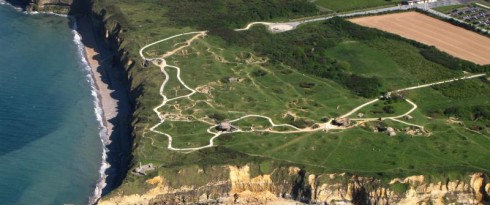
Look at the map and locate Pointe du Hoc situated between the two beaches and you can understand why, like the batteries at Longues-sur-Mer, the guns at Pointe du Hoc had to be silenced in order for the invasion to succeed.
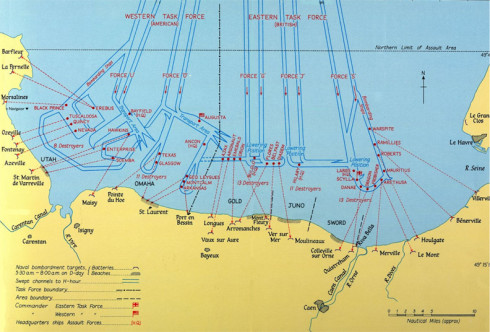
Since the Americans had been assigned the taking of Utah and Omaha beach it was natural that the taking of Pointe du Hoc would fall to them and that task was assigned to the elite United States Rangers, which the U.S. Army describes as the best trained soldiers in the world. They are the Army’s version of the perhaps better known, Navy Seals.
The plan for taking Pointe du Hoc was to bombard the batteries from the sea for hours before the Rangers came ashore. The land remains today as it was after the bombardment and there is no doubt that a lot of heavy shells blew the hell out of the landscape, but as with most of the coastal fortifications that made up the Atlantic Wall, the operational batteries on Pointe du Hoc were not decisively destroyed.
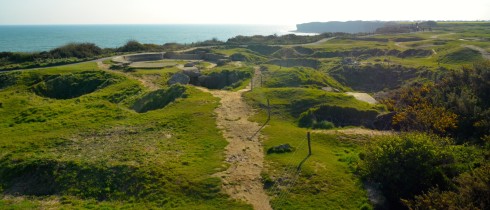
Here I am standing in a former gun emplacement at Pointe du Hoc which will give you an idea of how big the guns were.
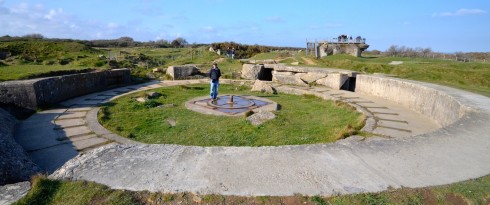
The rangers assignment on paper was simple – land and capture the guns. There was only one little problem – these 100 foot + cliffs that had to be climbed first.
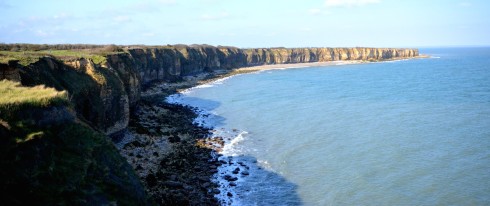
Taking heavy fire and losing two landing craft in the process, most of the Rangers managed to scale the cliffs only to find the Germans had moved the guns. The guns were located and after a bloody fight the Rangers captured and disabled them. Then the real problems began when the Germans counterattacked. Despite being severely outmanned the Rangers held the ground for two days until relieved. Of the original 225 + men who made it ashore only 90 were still standing.
Today on this lovely piece of ground this simple monument commemorates the feats achieved by the Rangers at Pointe du Hoc and the sacrifices most of them made. Thank you Rangers. Here is a nine-minute segment of The Longest Day dramatizing the attack on Pointe du Hoc. It’s unbelievable what men can undertake against all odds.
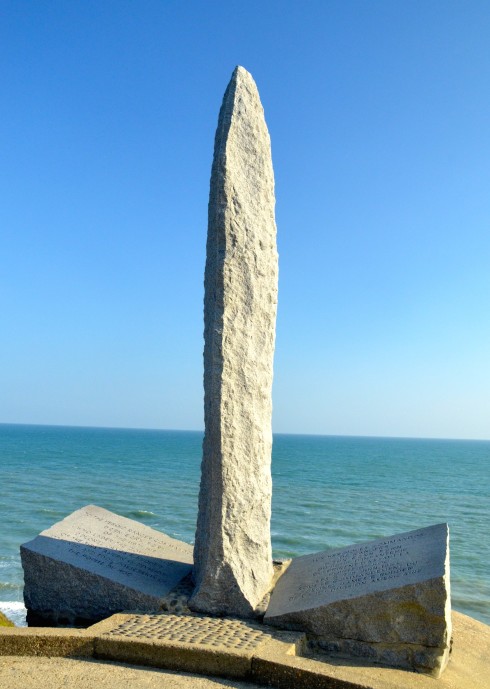
Now onward to Omaha Beach.

